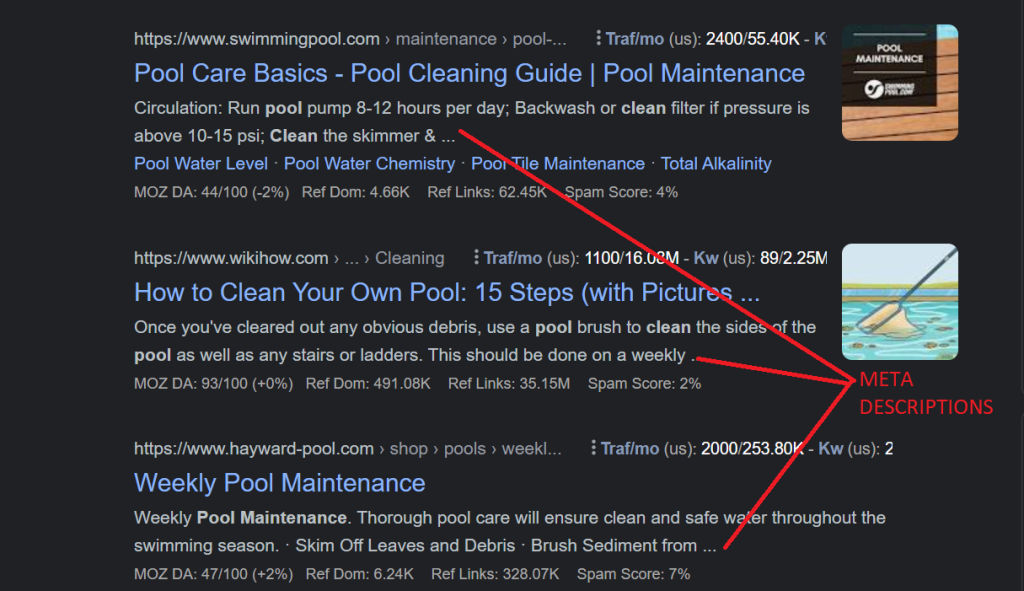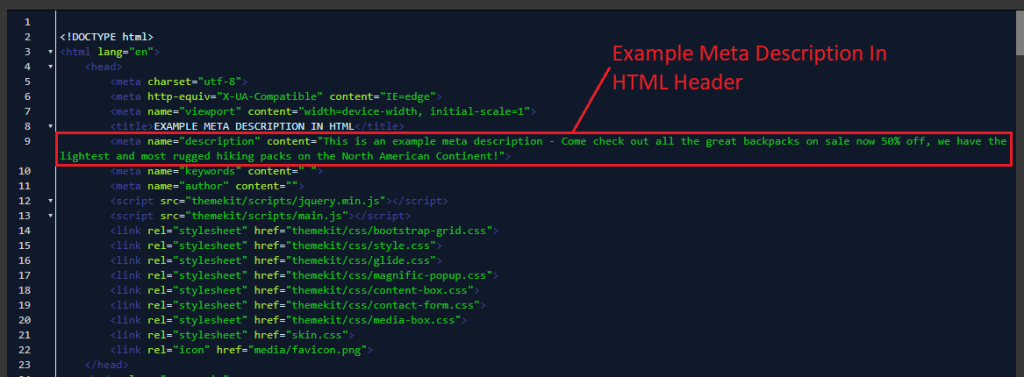Understanding SEO Descriptions and Meta Tags: Enhancing Your Website’s Visibility
Having a strong online presence is crucial for businesses and individuals alike. One of the essential elements in improving a website’s visibility and search engine rankings is the use of SEO descriptions and meta tags. These components play a significant role in how search engines interpret and display your website in search results.

SEO Description
An SEO description, also known as a meta description, is a brief summary that provides a concise overview of a web page’s content. It typically appears below the page title in search engine results. Although it doesn’t directly influence rankings, a well-crafted SEO description can significantly impact the click-through rate (CTR) of your website. When users search for specific keywords or topics, the SEO description serves as a compelling snippet that encourages them to click on your link over others.
The key to an effective SEO description lies in its relevancy, clarity, and call-to-action. It should be written in a way that accurately reflects the content on the page while enticing users to learn more. Aim to keep the description around 150-160 characters, as search engines may truncate longer descriptions, affecting their effectiveness.
Meta Tags
-
Title Tags: The title tag is an HTML element that defines the title of a webpage. It appears as the clickable headline in search engine results and is essential for both SEO and user experience. Including relevant keywords in the title tag can improve the page’s visibility in search results and encourage users to click through to your website.
-
Meta Keywords Tags: Historically, meta keywords tags were used to provide a list of relevant keywords to search engines. However, due to abuse and misuse, major search engines have significantly reduced their importance. In fact, some search engines, like Google, have completely ignored them. Today, the focus is more on high-quality content and other SEO factors rather than keyword stuffing in meta tags.

Best Practices for SEO Descriptions and Meta Tags
To optimize your website’s visibility and attract more organic traffic, follow these best practices for SEO descriptions and meta tags:
-
Relevance and Uniqueness: Each page on your website should have a unique SEO description and title tag that accurately represents its content.
-
Keywords: Include relevant keywords naturally in your SEO description and title tag, but avoid keyword stuffing.
-
Clarity and Call-to-Action: Craft clear, compelling, and concise SEO descriptions that encourage users to click through to your website.
-
Meta Keywords: Focus on creating valuable content rather than relying solely on meta keywords tags for SEO.
-
Length: Keep your SEO descriptions within the recommended character limit to ensure they display properly in search results.
-
Mobile Friendliness: Ensure that your SEO descriptions and meta tags are optimized for mobile devices, as a significant portion of web traffic comes from mobile users.
In conclusion, SEO descriptions and meta tags play a vital role in improving your website’s visibility and attracting more organic traffic. By optimizing these elements with relevant keywords and compelling content, you can increase your website’s chances of ranking higher in search engine results, ultimately leading to more visitors and potential customers.

